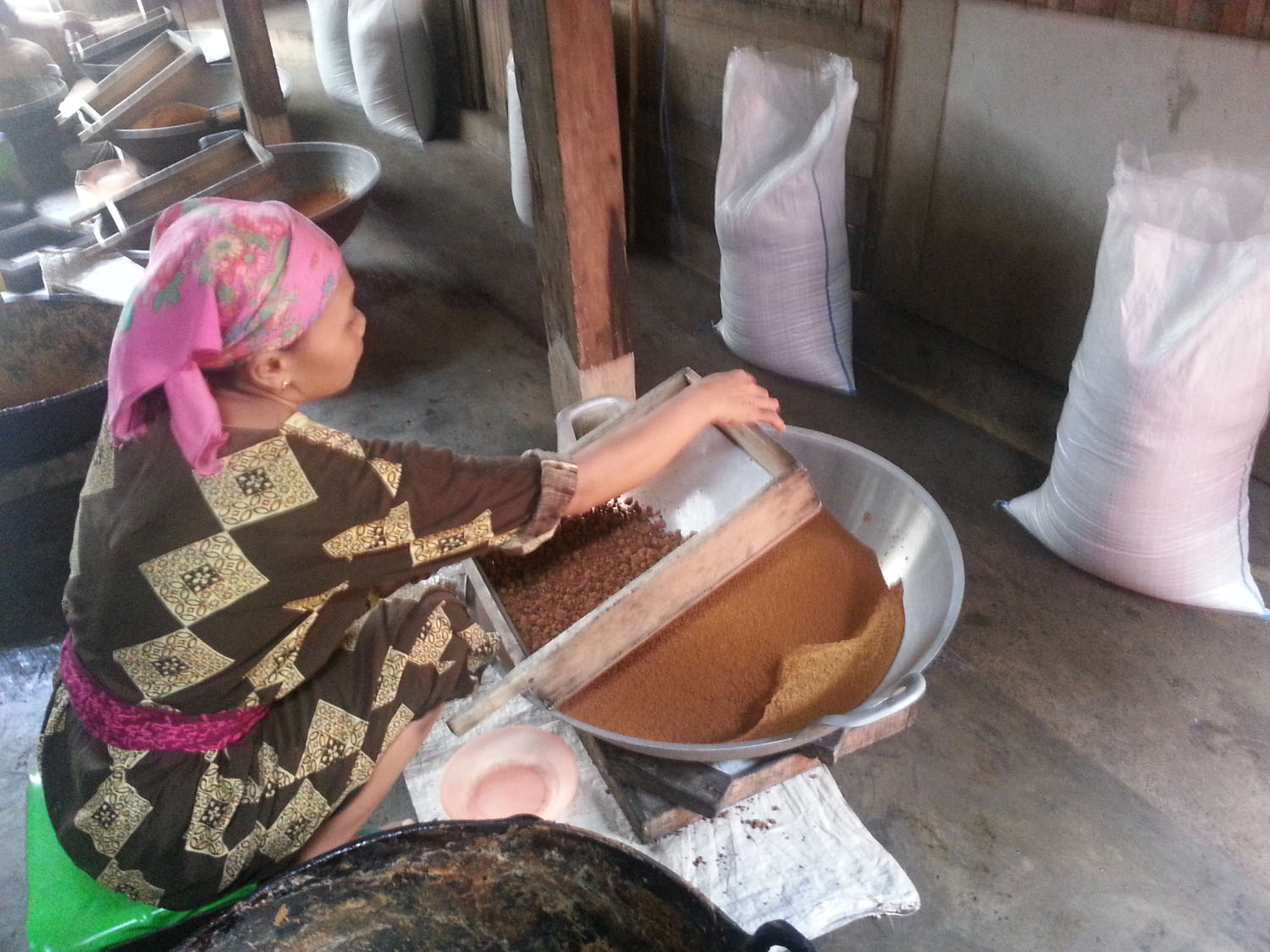Palm sugar is a type of natural sugar that has been gaining popularity recently. Made from the sap of palm family trees such as aren, coconut, and siwalan, palm sugar has a distinct taste and many health benefits. Known by various names in different regions, its traditional production process makes it a healthier choice compared to regular white sugar. This article will further discuss what palm sugar is, how it is made, and its health benefits.
What is Palm Sugar?
Palm sugar is sugar made using the sap or
juice from palm family trees. Sap is a sweet liquid extracted directly from
palm trees. For instance, aren sap is taken from aren trees, while badheg water
is sap taken from coconut trees. This sap extraction process is traditionally
done by sugar farmers, known as tappers. They climb coconut trees every morning
and evening to ensure the sap remains fresh and of good quality. The collected
sap is then processed into sugar through a series of natural and traditional steps.
The Process of Extracting and Processing
Sap
Extracting sap from palm trees is done
very carefully. Sugar farmers climb coconut trees in the morning and evening to
maintain the sap's freshness. This process requires special skills as tappers
need to prepare tools to collect the sap and ensure no contamination occurs
during extraction. Once collected, the first step is to filter the sap using a
fine sieve (mesh >80) to remove impurities such as leaves, wood chips, and
insects.
After filtering, the sap is placed in a
large pan with a production capacity of between 5 to 15 kilograms. The sap is
then heated to around 140°C to turn it into caramel. Sugar farmers do not need
a thermometer to determine the caramel's readiness; they use instinct and
experience to know when the caramel is done. Once the caramel is ready, the
heat is reduced, and the caramel is continuously stirred until its temperature
drops. At this stage, the caramel is stirred using a special tool until it
turns into palm sugar powder or crystals.
The Process of Forming Palm Sugar Crystals
Once the caramel turns into powder or
crystals, the next step is to sift it using a mesh 18 sieve to ensure the
produced palm sugar is of good quality. Powder that does not pass through the
sieve will be ground again or re-cooked until it reaches the desired texture.
The final process is drying the palm sugar in an oven to reduce its moisture
content to a dryness level of 1-2%. The result is high-quality palm sugar ready
for consumption.
Conclusion
Palm sugar is a healthier and more
environmentally friendly natural sugar option. Made through a traditional
process involving sap extraction from palm trees, palm sugar offers a distinct
sweetness and various health benefits. With a lower glycemic index and essential
nutrients, palm sugar is a good alternative to regular white sugar. It is no
wonder that more people are switching to palm sugar as a natural sweetener in
their food and drinks. As a palm sugar producer, we are committed to
maintaining our product's quality in terms of texture, color, dryness level,
and most importantly, consumer health. The palm sugar we produce is an organic
product without chemicals or artificial preservatives because health starts
with what we consume.

Posting Komentar untuk "Getting to Know Palm Sugar: Healthy and Traditional Natural Sweetener "